How to create an energy report on Windows 10
You can create a power efficiency report to understand and resolve energy-related problems, and here's how on Windows 10.
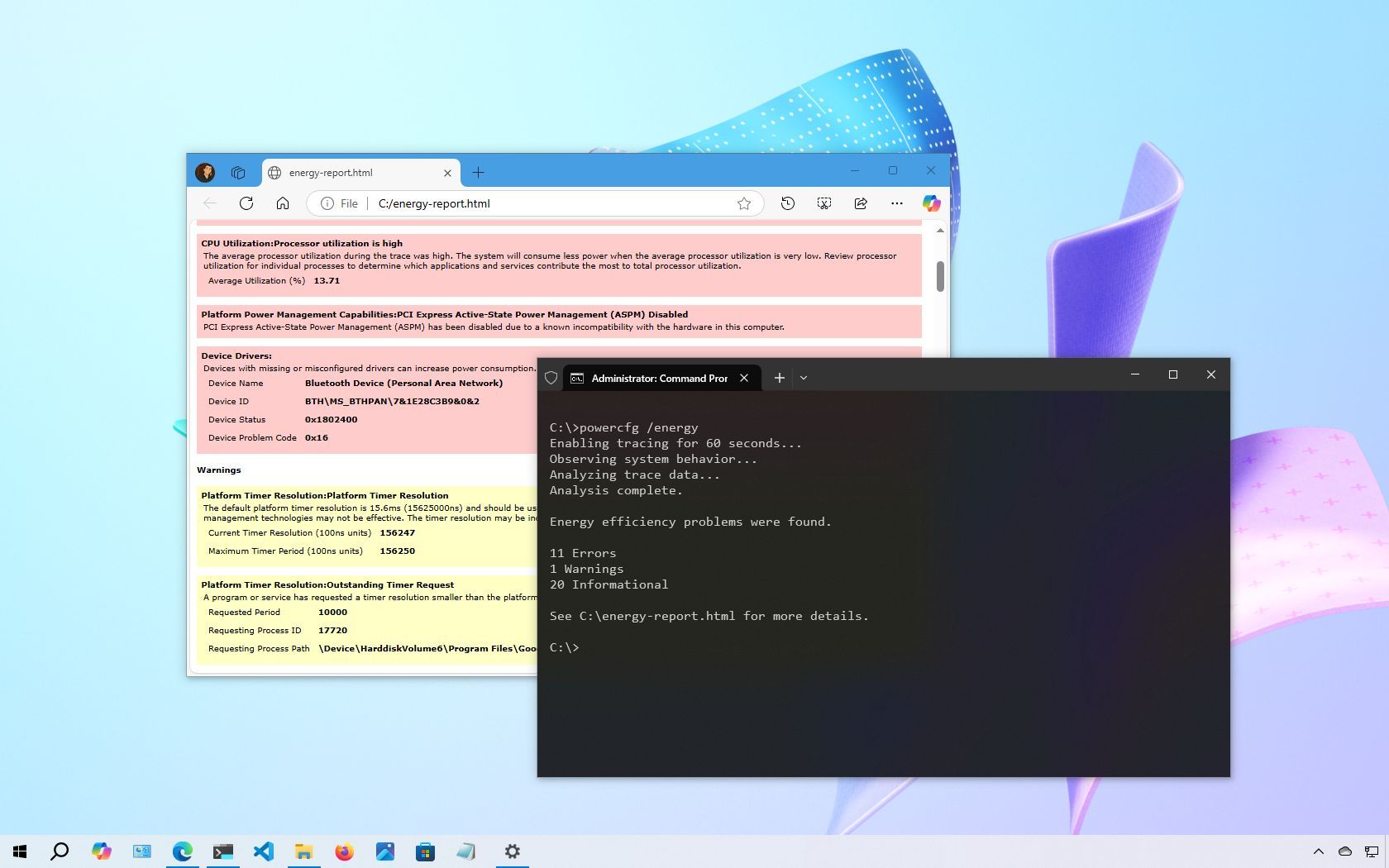
Although Windows 10 generally does a good job of managing your device energy, you might still encounter issues like rapid battery drain or inefficient energy usage. In such cases, generating a detailed energy report can be incredibly useful.
The operating system includes a built-in diagnostic tool called powercfg, which you can run from Command Prompt. This tool collects data over a specific period to analyze power behavior, highlighting common problems that may affect battery life or overall energy efficiency. After generating the report, you can review the insights to make informed changes (whether that means adjusting system settings, upgrading hardware, or replacing a worn-out battery, if possible).
In this how-to guide, I'll outline the steps to create an energy report on Windows 10 to diagnose your device's power efficiency and battery life.
Recent updates
These instructions has been updated to ensure accuracy and reflect changes to the process in the operating system.
How to create energy report using Command Prompt
To generate an energy report on Windows 10, use these steps:
- Open Start.
- Search for Command Prompt, right-click the top result, and select the Run as administrator option.
- Type the following command to create an energy report and press Enter: powercfg /energy
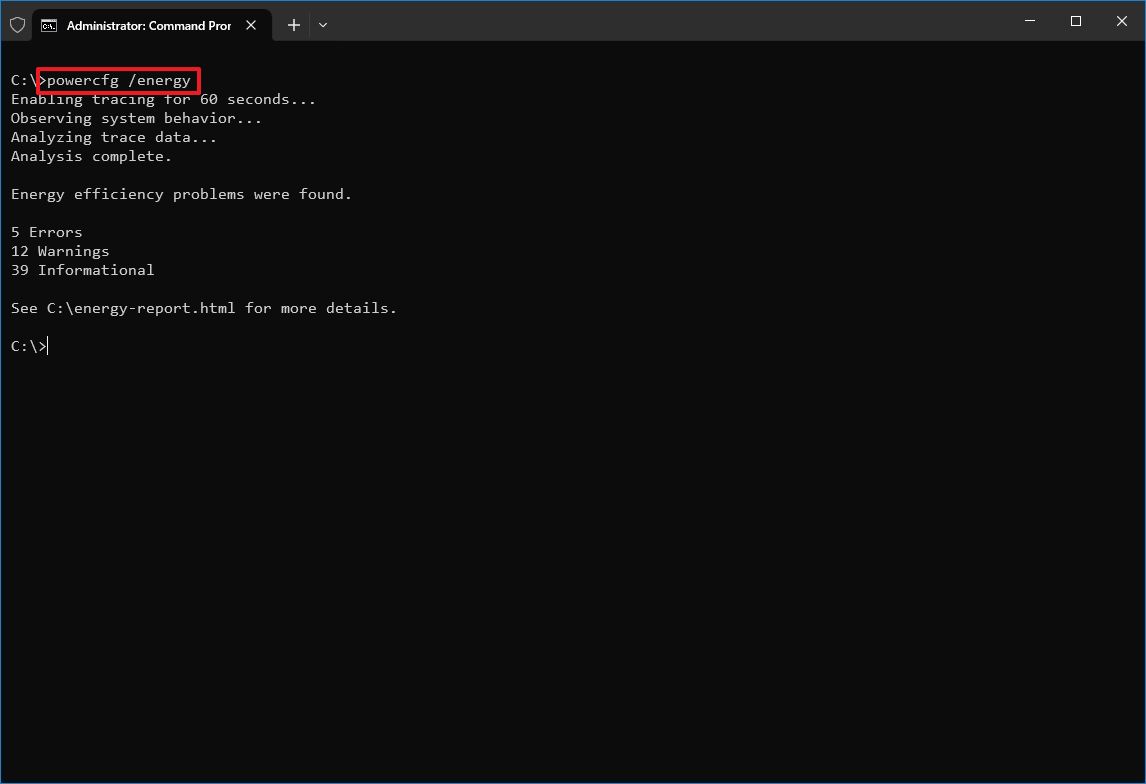
- (Optional) Type the following command to generate an energy report with a specific duration and press Enter: powercfg /energy /duration SECONDS
In the command, replace "SECONDS" with the time you want the tool to monitor the power behavior to create a report. If you do not use the "duration" option, the command will run for 60 seconds. For example, this command runs the energy monitor for two minutes: powercfg /energy /duration 120
- Confirm the output to determine the location of the report.
Once you complete the steps, you can review the report to understand the energy and battery efficiency and investigate and resolve power problems on Windows 10.
For the best results, it is always recommended to use the command when no application is running and the device is in idle mode when generating an energy report.
Get the Windows Central Newsletter
All the latest news, reviews, and guides for Windows and Xbox diehards.
How to review energy report on Windows 10
To view the energy report, use these steps:
- Open Start.
- Search for Run and click the top result to open the Run command.
- Quick tip: You can also use the "Windows key + Run" keyboard shortcut to open the "Run" command. You can also right-click the "Start" button and select the "Run" option to open the app.
- Type the following path and press Enter: C:\energy-report.html
- Quick note: The location of the files may be different on your installation. As a result, ensure to note this information in the powercfg command result.
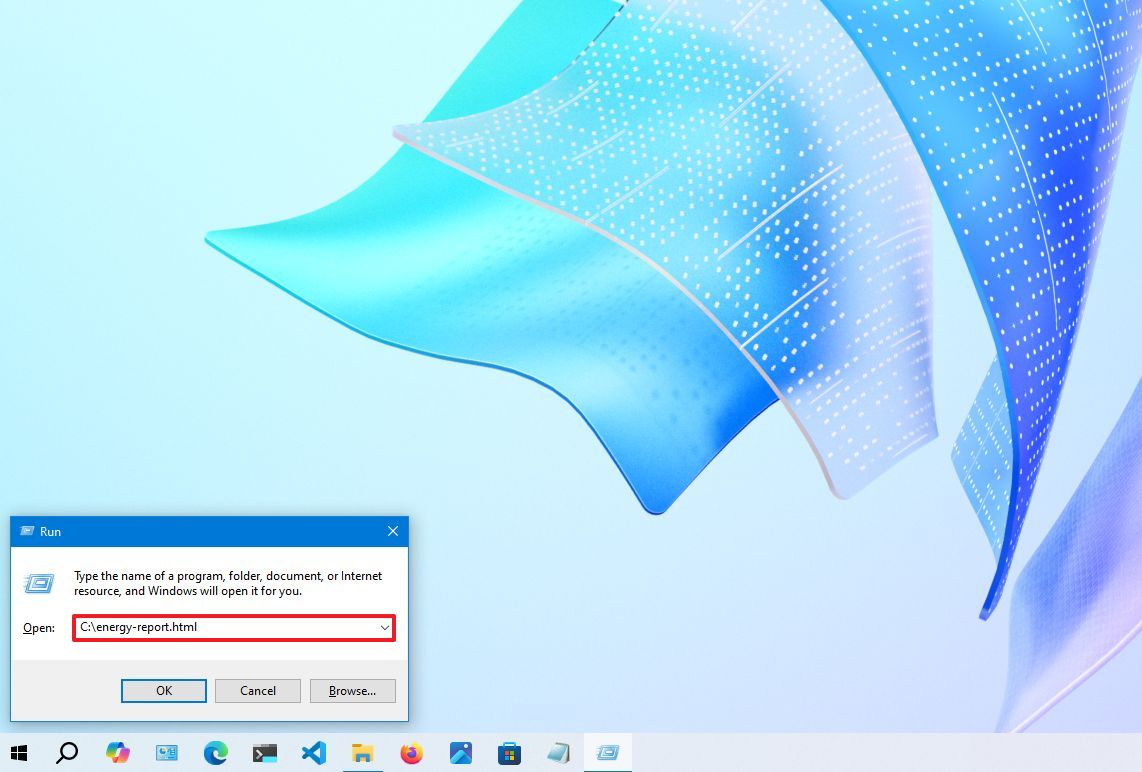
- Review the energy report in the web browser.
After you complete the step, the report will open with the default web browser configured on Windows 10.
The power efficiency report can be very long, but it is not too difficult to understand. The report includes a first part with the scan information, version of Windows 10, and related details.
The second part contains the analysis results, which are grouped into three categories: errors, warnings, and information.
The "Errors" section includes the items that are considered problems with your device. Usually, these are configuration issues rather than hardware problems.
For example, in this test, the report points out the "Power Policy: Sleep timeout is disabled (On Battery)" error, which simply means that the device is not configured to sleep automatically after a period of inactivity while on battery.
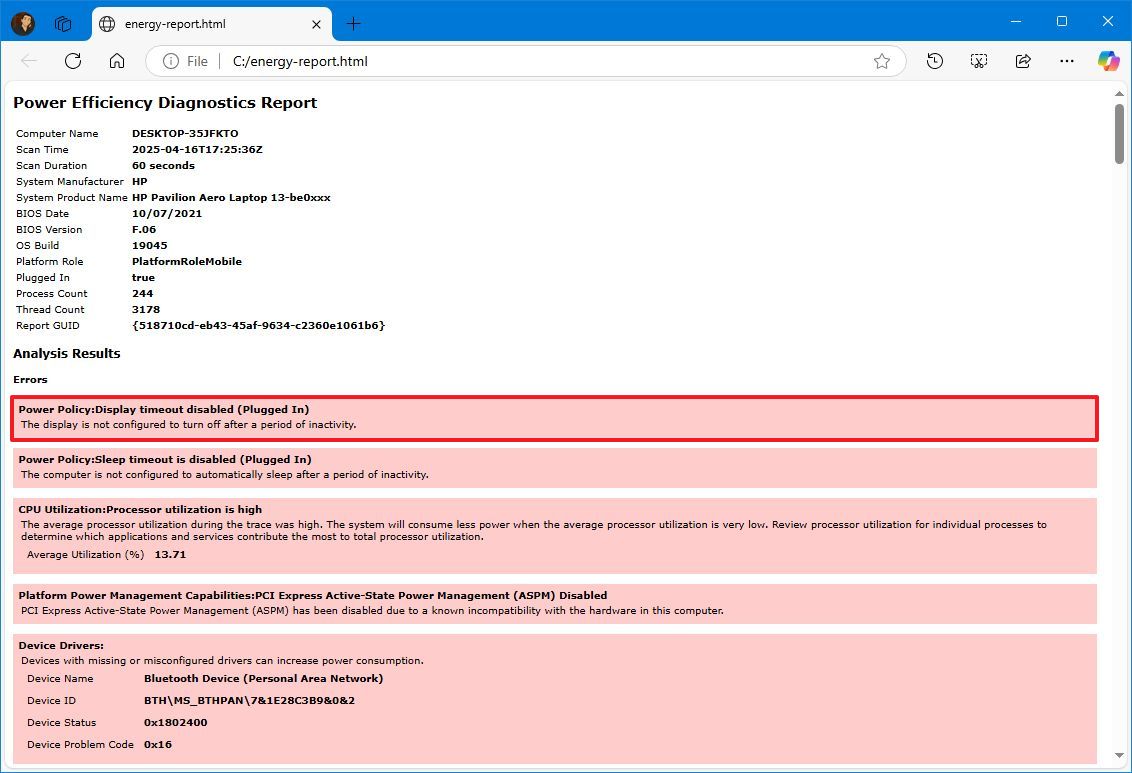
If this were a problem on your laptop, to resolve the issue and improve battery life, you would need to change the sleep settings to sleep automatically after a certain period on Settings > System > Power & Sleep.
The "Warnings" section reveals features and components that are not using the recommended settings or services that are responsible for consuming a lot of power during the trace.
For instance, the report points out the "Power Policy: Display timeout is long (On Battery)" warning, which indicates that the display turns off after five minutes when the recommended settings should be less than five.
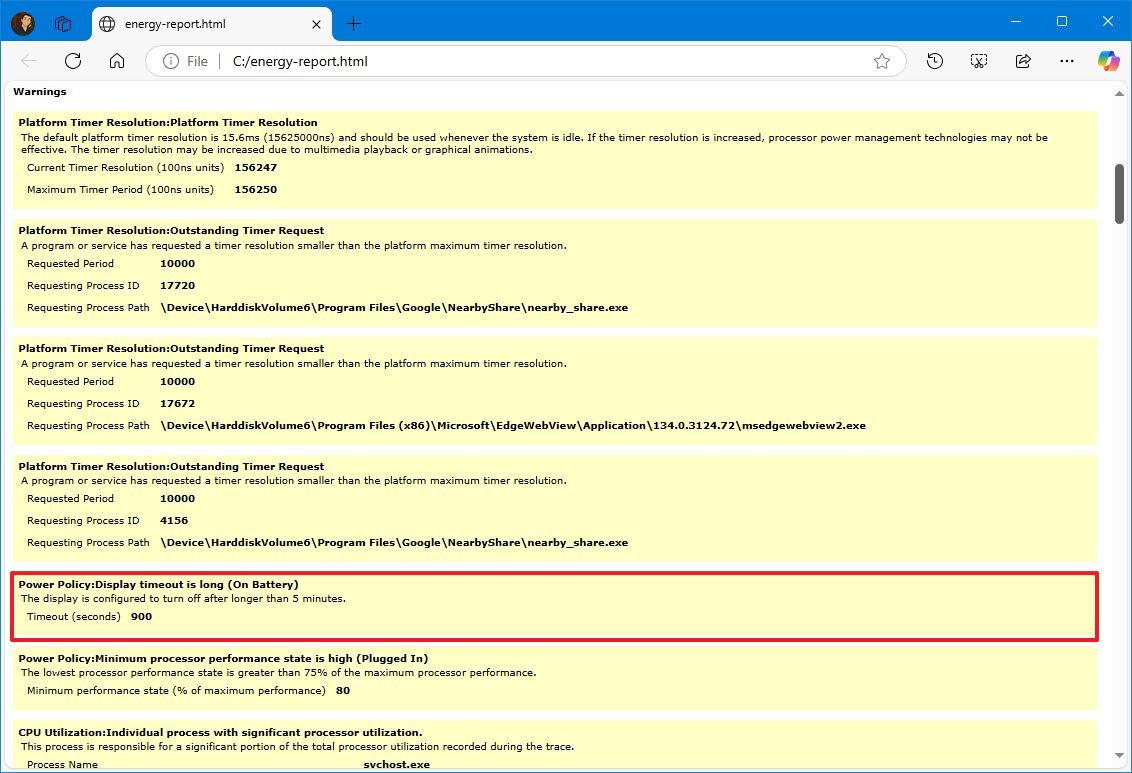
If this were an issue in your machine, you would fix it by changing the display sleep configuration on Settings > System > Power & Sleep.
The "Information" section displays important energy-related information about the system, including the currently configured power policies, battery information like brand, model, and capacity, the supported sleep features, and more.
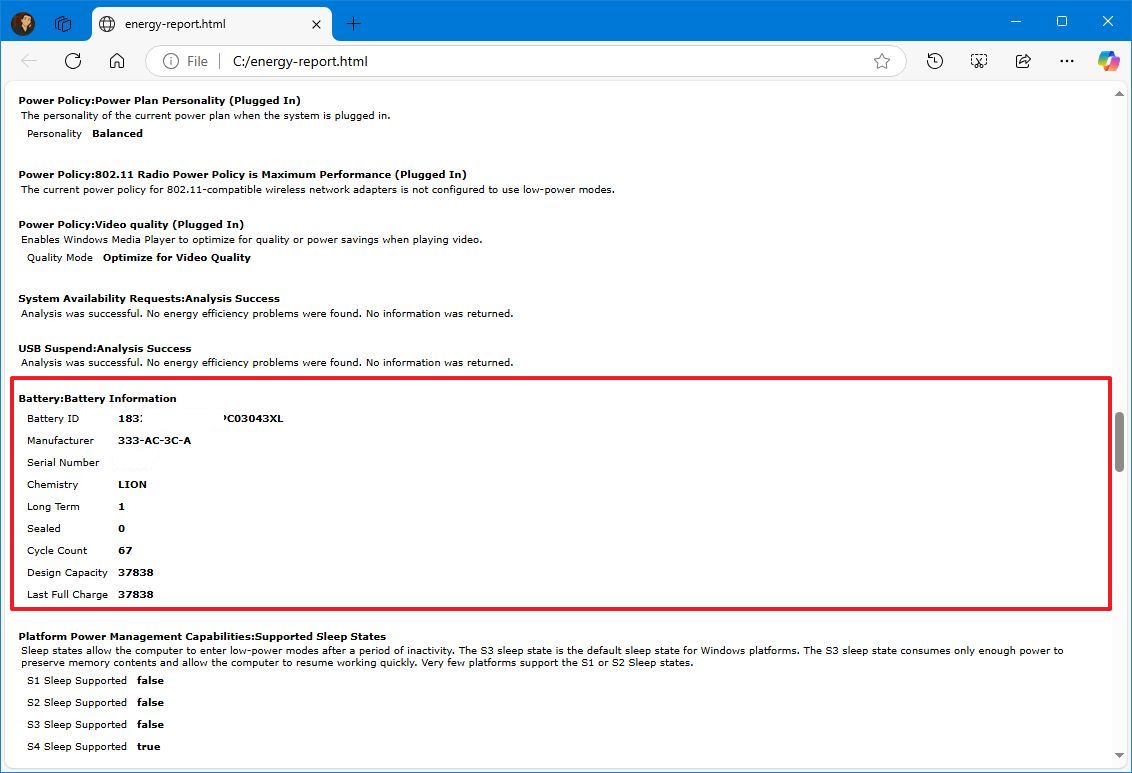
Perhaps the most significant piece of information is battery design capacity and the last full charge. For example, this test shows that the design capacity is 37838 MWh, but after many cycles, the capacity after the last charge is 37838 MWh. This means that the device can still hold around 100 percent of the charge. However, if the percentage was significantly lower and you were having a battery drain problem, this could indicate that the battery needs to be replaced.
If you need additional help, you can also send the report to tech support or a savvy friend to help you diagnose and tweak the power settings to optimize your desktop computer or laptop's energy efficiency.
More resources
Find in-depth guides, troubleshooting tips, and the latest updates on Windows 11 and 10 here:
Mauro Huculak has been a Windows How-To Expert contributor for WindowsCentral.com for nearly a decade and has over 15 years of experience writing comprehensive guides. He also has an IT background and has achieved different professional certifications from Microsoft, Cisco, VMware, and CompTIA. He has been recognized as a Microsoft MVP for many years.
You must confirm your public display name before commenting
Please logout and then login again, you will then be prompted to enter your display name.

